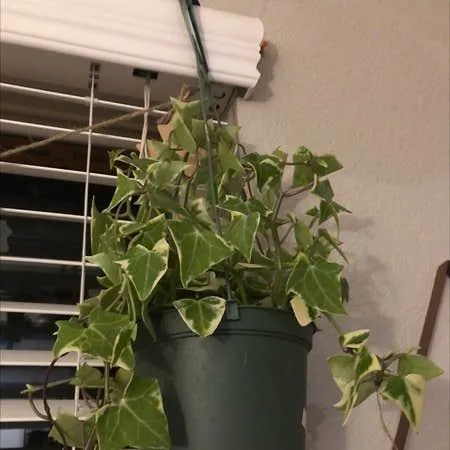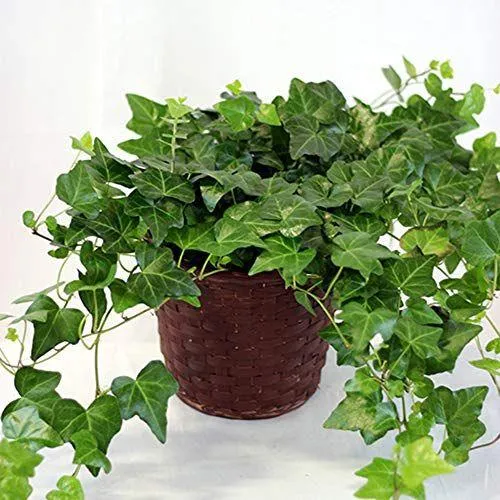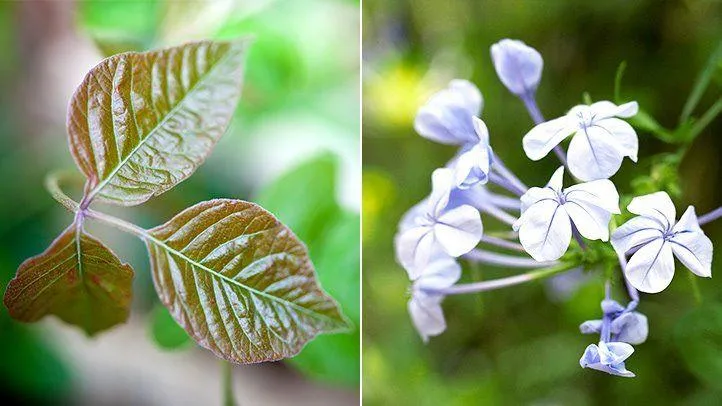How Much Light Does Ivy Need to Thrive?
If you’ve ever grown ivy either indoors or outdoors, you’ve probably wondered how much light it needs to stay healthy. While ivy can adapt to varying light conditions, providing the right amount of sunlight is key to keeping your ivy looking its best. In this article, I’ll explore ivy’s light requirements and give you tips to ensure your ivy is getting the light it craves.
Ivy’s Light Preferences
In general, ivy is considered a plant that tolerates low to medium light. It can survive in shadier spots but thrives when given brighter conditions.
- Direct sun (6 or more hours): Ivy growing outdoors can handle full sun, especially English ivy. Just be sure the soil doesn’t dry out in hot sun.
- Bright, indirect light (4-6 hours): Areas with morning or afternoon sun filtered through trees are ideal. This provides enough brightness without burning foliage.
- Low light (less than 4 hours): Ivy may still live in low-light corners but won’t grow fast or look as lush. It might even lose lower leaves.
From my experience, the more sunlight ivy gets within that medium range, the fuller and greener it will be. Too little light and it struggles. But too much unfiltered sun can scorch leaves, so dappled shade is generally best.
Factors Affecting Ivy’s Light Needs
A few variables influence exactly how much illumination your ivy requires:
- Variety: Boston ivy tolerates deeper shade than English ivy.
- Time of year: During winter dormancy, ivy needs less light. In spring/summer active growth, it benefits from brighter conditions.
- Location: Indoor ivy has lower light than outdoor due to window filtration/shorter daylight hours.
- Age: Established vines acclimate to lower light vs. young cuttings just starting out.
So the light level that suits one ivy may not be perfect for another based on type, season, indoor/outdoor placement, and maturity. You have to observe your specific ivy’s reaction.

Signs Your Ivy Needs More Light
If your ivy is struggling, check the following warning signs that it may be lacking sufficient illumination:
- Spindly, elongated growth between leaf nodes instead of compact vines.
- Pale green or yellow foliage instead of deep green.
- Small, sparse leaves rather than large, dense foliage.
- Lower leaves dropping prematurely from the stems.
- Slow or stunted growth with vines barely spreading.
- Leaves cupping or curving downward instead of remaining flat.
These symptoms indicate your ivy is straining to absorb what little light it can get. Moving it somewhere brighter will help remedy the situation.
Providing the Right Light
To give your ivy the optimal light conditions, consider these tips:
- Place outdoor ivy in a location with morning sun and afternoon shade.
- For indoor ivy, position it near an east- or west-facing window.
- Supplement natural light with a grow light if window exposure is low.
- Prune back other plants blocking sunlight from reaching your ivy.
- Gradually acclimate ivy to higher light by starting in partial shade and increasing sun exposure.
- Rotate indoor vines weekly so all sides receive equal illumination.
Following these practices usually does the trick. But if symptoms persist, your ivy may simply require a spot with more abundant light flow. Trust your plant – if it still looks unhappy, it’s telling you something!
Shade-Loving Varieties
While most ivies favor medium light, a few cultivars genetically adapt better to low-light landscapes:

- Swedish ivy – thrives in deep shade with minimal sun exposure.
- Nepldsetum ‘Ivy’ – hardy groundcover for woodland gardens under trees.
- Hedera canariensis – tolerates heavy shade, especially as a houseplant.
- Silver-variegated ivies – foliage pattern adds brightness to dim corners.
So if shade is unavoidable, select one suited for minimal light. Proper ivy selection is half the battle in solving light deficiencies.
In Summary
To keep your ivy looking its shiny best, aim for medium indoor or outdoor illumination between 4-6 hours daily. Brighter is usually better within that range, but factor in variety, placement, season, and age. Pay attention to signs of light starvation and adjust your ivy’s conditions accordingly by moving or supplementing its light source for thriving growth.
With the right amount of sunshine, your ivy will thank you by spreading vigorously. Let me know if you have any other ivy care questions! Growing this versatile vine is quite rewarding when you understand its simple light preferences.
Ivy Lighting Requirements
| Type of Ivy | Minimum Light Requirements | Ideal Lighting Conditions |
|---|---|---|
| English ivy | Partial shade to shade | East, north or west-facing window with bright, indirect light |
| Swedish ivy | Bright, indirect light | South or west-facing window with 5 or more hours of direct sun |
| Needlepoint ivy | Bright, indirect light | West or south-facing window with 2-4 hours of direct sun |
| Cast iron plant | East, north or west-facing window with indirect light | South or west-facing window with 5 or more hours of direct sun |
| Heartleaf philodendron | East, north or west-facing window with bright, indirect light | South or west-facing window with 2-4 hours of direct sun |
FAQ
-
How much sunlight does English ivy need?
English ivy grows best in partial shade, meaning around 4 hours of direct sun each day. It can tolerate less light, around 2-3 hours, but won’t grow as vigorously. Full shade is basically too dark for ivy and it won’t thrive without some amount of direct sun shining on it.

-
Can ivy grow in low light conditions?
Kinda, sort of. Ivy will survive in lower light but it won’t grow very well. It needs at least a few hours of sunshine every day to grow and spread properly. Ivy may actually start to look leggy and sparse if it’s not getting enough sunlight. So while it can put up with low light for a bit, ivy really prefers at least partial shade to stay bushy and healthy looking in the long run.
-
What happens if ivy doesn’t get enough sun?
When ivy is starved for sunlight, it basically gets bored and decides to do other stuff instead of growing. Okay, maybe ivy isn’t that complex – but you get the point. If it doesn’t receive sufficient light, ivy will grow poorly and lose its vibrant green coloration, becoming pale and anemic looking. It may also become leggy as it desperately stretches toward any beams of sun. The lack of proper sun can even cause ivy to freeze up and go dormant.
-
How much direct sun does ivy need per day?
most garden experts agree that English ivy thrives with around 4 hours of direct sun each day. Any less than two hours could cause it to struggle, though it depends on other factors like temperature. Some sources suggest 3 hours direct sun daily minimum. I’ve noticed my own ivy seems happiest around the 4 hour mark. But who knows for sure – maybe ivy just likes to party in the sun!
-
What happens if ivy gets too much sun?
On the flip side, an overabundance of sunshine may scorch ivy as well. Too much unfiltered sunlight, like 6+ hours per day, could dry out and burn the leaves. Similar to a person getting sunburn, ivy can fry if it gets overexposed. Interestingly though, ivy growing on south-facing walls may adapt to handle extra sun better due to natural selection. I guess you could say ivy sometimes likes to play in the sun, other times prefers to stay shaded – who doesn’t relate to that?
-
Is 4 hours of direct sun enough for ivy?
The general guideline is that 4 hours of direct sun each day is sufficient to keep ivy growing happily and healthy. Strong, green new growth is a sign it’s getting the light it needs. However, every plant has its own personality – what makes one ivy thrive may differently affect another. So long as ivy appears content with around 4 sunlight hours sans issues like burning or bleaching, chances are it has the right amount. But you never know for sure what any plant truly wants!

-
What should I do if my ivy isn’t getting enough sunlight?
If you notice your ivy looking pale, sparse or dormant, it may need a sunnier spot to perk up. Try moving it to a location with more direct light, at least a south or west facing window. You could also supplement with a grow light if no better option. Gradually increasing sunlight hours helps ivy adjust. Cut back any leggy new growth as well to encourage bushier regrowth. With adequate sun moving forward, the ivy ought to regain its green glow. Just don’t forget to water regularly in its new home!
